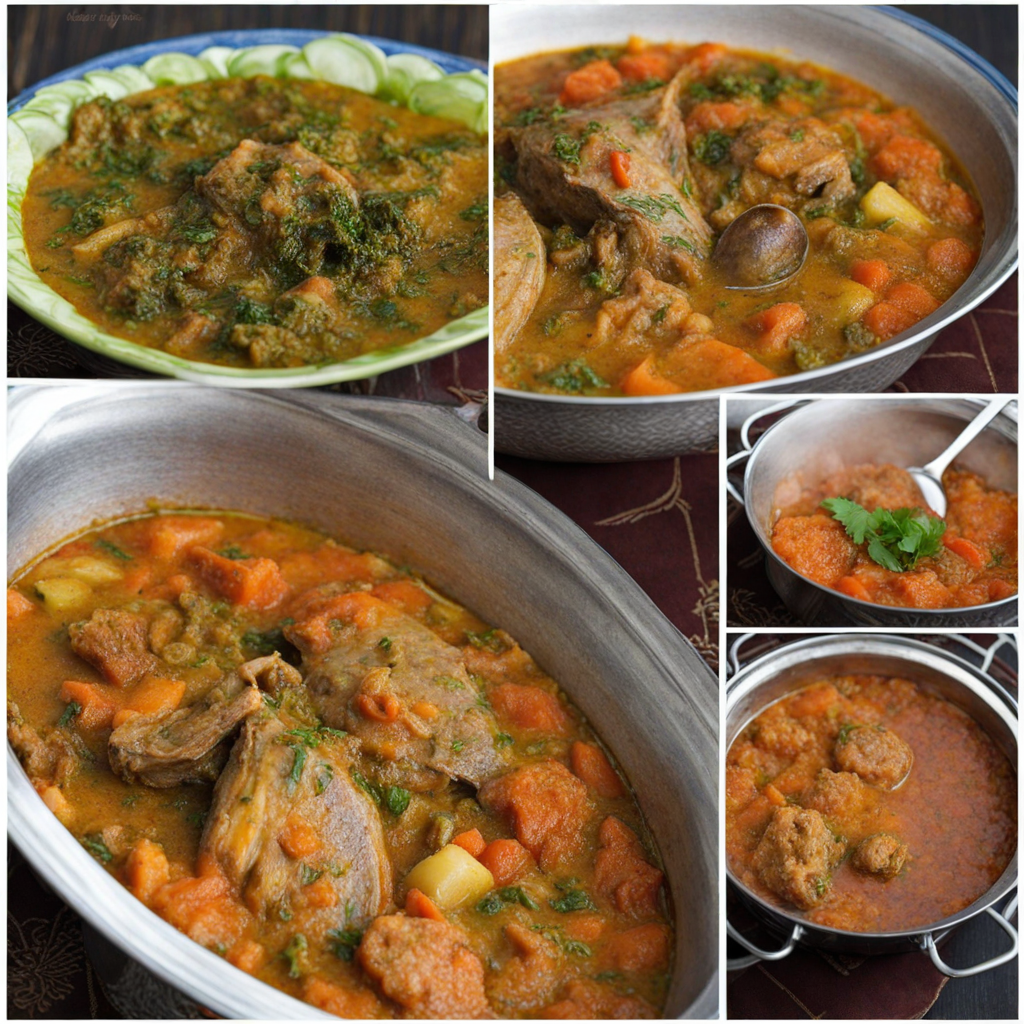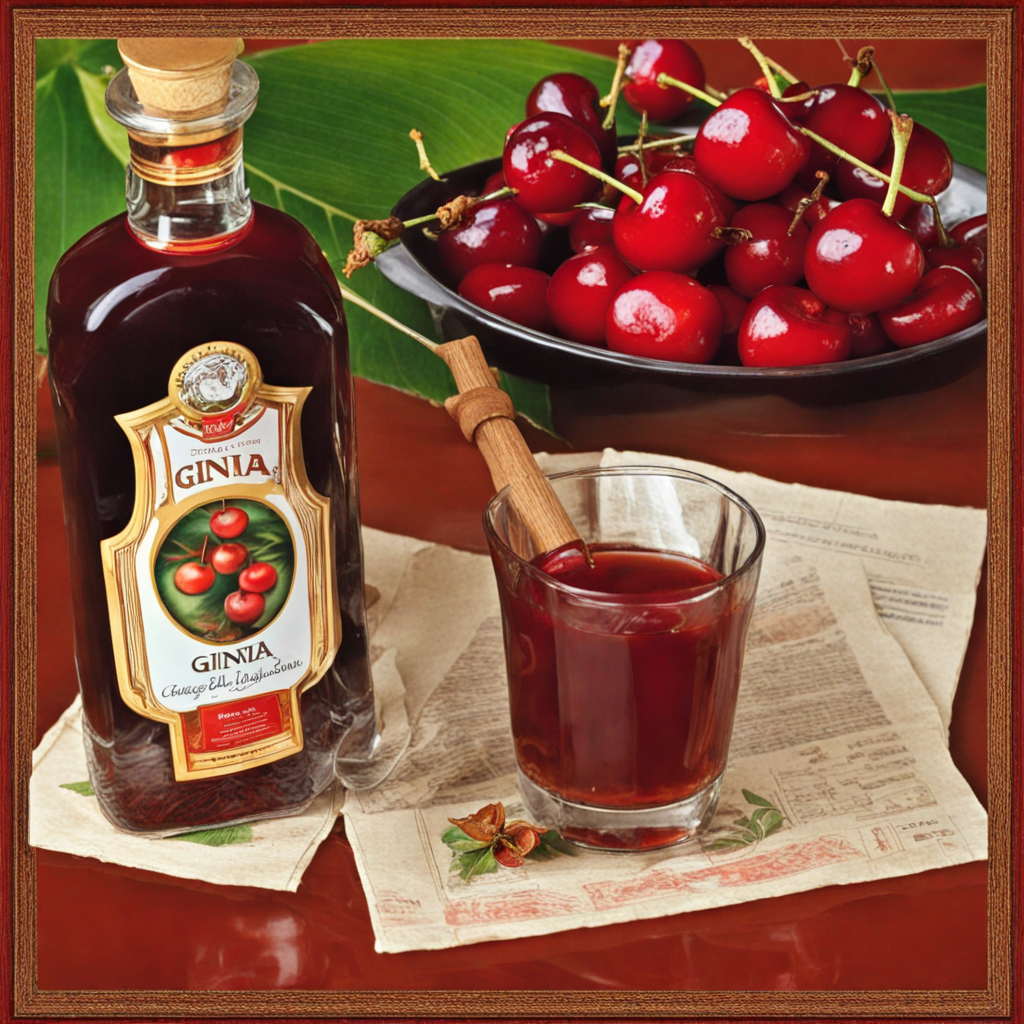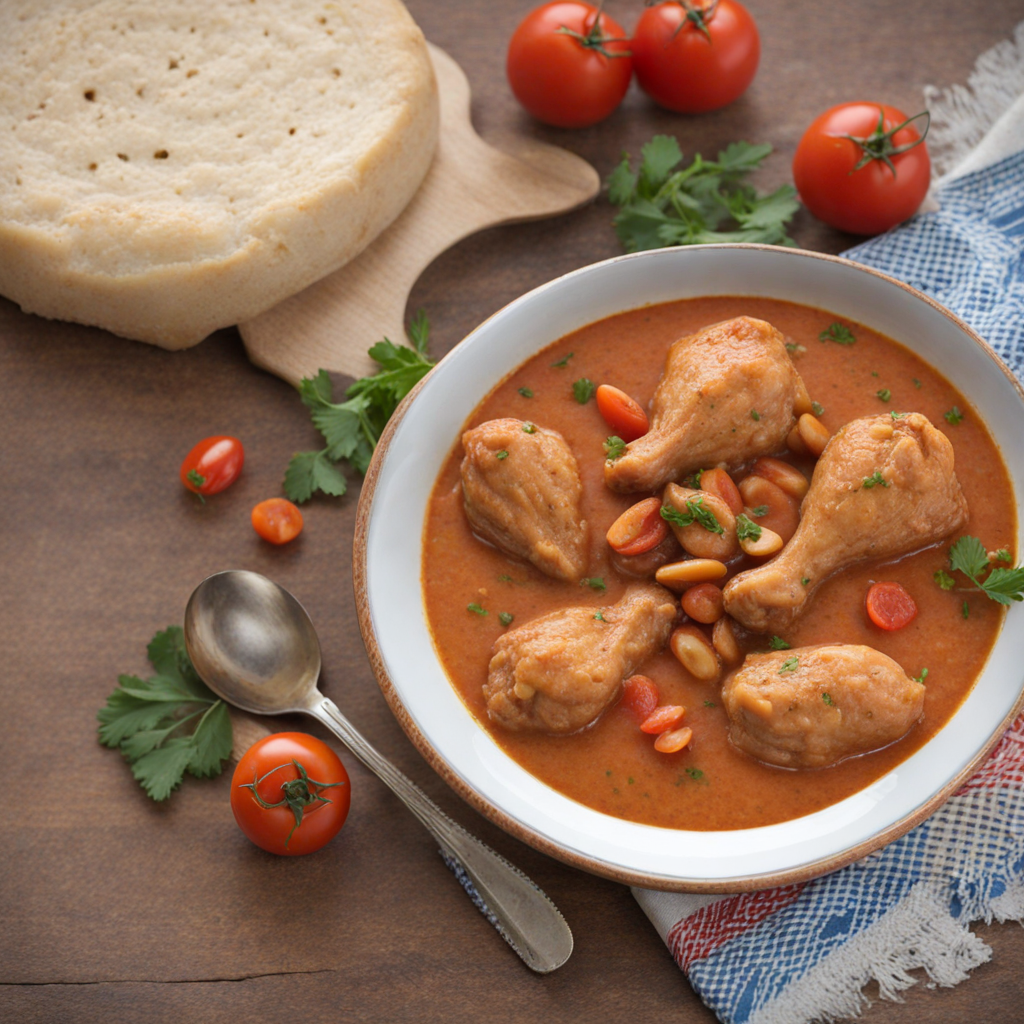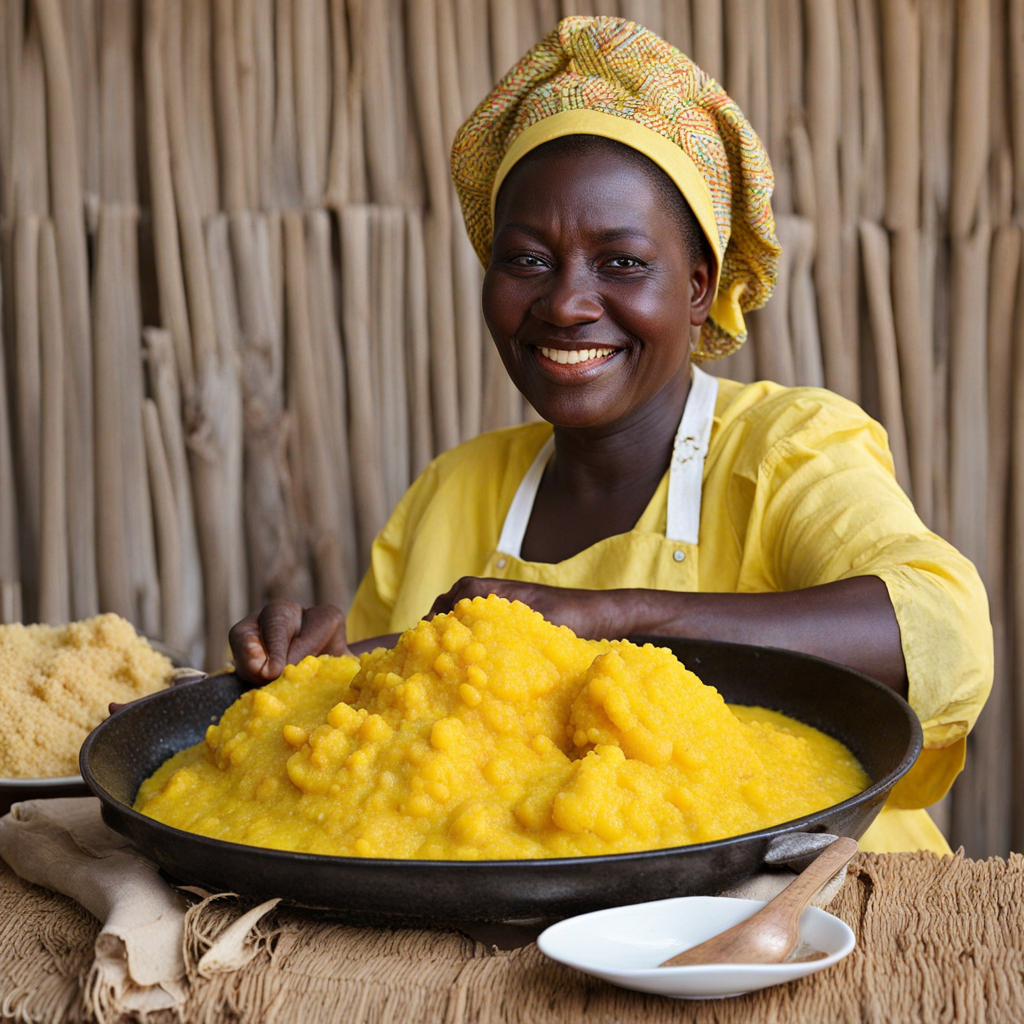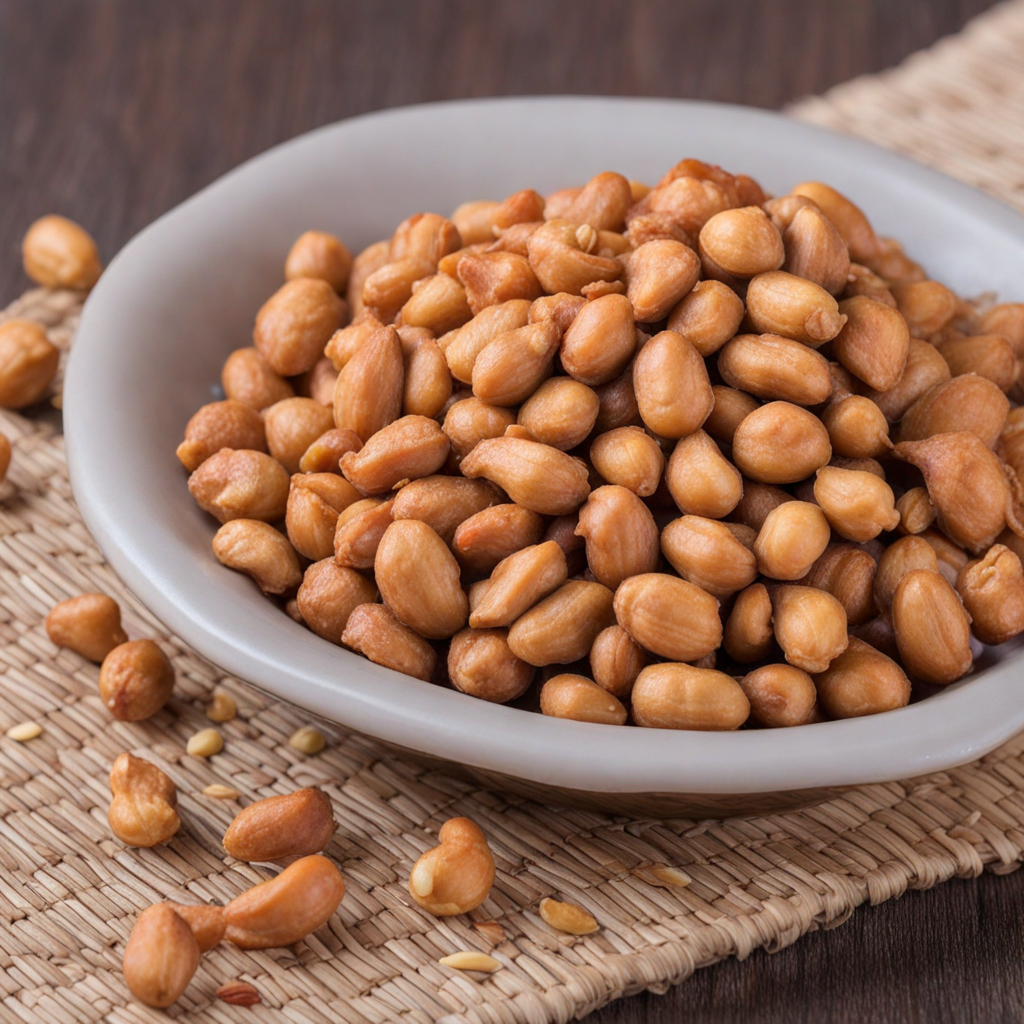Calulu
Calulu is a traditional Angolan dish that offers a vibrant and hearty culinary experience, showcasing the rich flavors and ingredients native to the region. This dish typically features a combination of fish, often fresh and local varieties such as tilapia or sardines, which are marinated and then stewed with a medley of vegetables. The base of the stew is enriched with palm oil, which adds a distinctive depth and richness to the overall flavor, along with fresh tomatoes, onions, and sometimes the addition of okra, contributing both texture and a subtle earthy taste. What sets Calulu apart is its aromatic blend of spices and ingredients, which may include garlic, ginger, and a variety of traditional Angolan spices that infuse the dish with warmth and complexity. The vegetables not only enhance the taste but also provide a colorful presentation, making the dish visually appealing. The combination of the tender fish and the stewed vegetables creates a comforting and satisfying dish that is perfect for sharing with family and friends. Typically served with a side of funge, a starchy side made from cassava or corn flour, Calulu is a staple that embodies the essence of Angolan cuisine. The funge acts as a perfect accompaniment, allowing diners to scoop up the flavorful stew, making each bite a delightful journey through the tastes of Angola. Overall, Calulu is not just a meal; it is a celebration of culture, community, and the unique flavors that define Angolan gastronomy.
How It Became This Dish
The Rich History of Calulu: Angola's Culinary Gem Calulu, a traditional Angolan dish, embodies the essence of the country's diverse culture, history, and culinary practices. This flavorful stew, typically made with fish or meat, vegetables, and a blend of spices, offers a tantalizing glimpse into Angola's past and present. As we delve into the origins, cultural significance, and evolution of Calulu, we uncover the threads that weave together the rich tapestry of Angolan cuisine. #### Origins and Ingredients Calulu’s roots can be traced back to Angola's indigenous populations, who have inhabited the region for millennia. The dish is a reflection of the country's geographical diversity, which spans coastal areas, savannas, and forests. This variety has influenced the local ingredients available, with fish being a staple in coastal communities, while beef, chicken, and vegetables are more common in the interior regions. The hallmark of Calulu is its combination of fresh ingredients, reflecting the agricultural practices and fishing traditions of the Angolan people. The dish traditionally features dried fish or meat, often accompanied by leafy greens such as cassava leaves or pumpkin leaves. Tomatoes, onions, palm oil, and garlic are essential components that contribute to the rich flavor profile of Calulu. The use of spices like paprika, black pepper, and sometimes piri-piri (a spicy chili sauce) further enhances its taste, showcasing the influence of Portuguese cuisine, a remnant of Angola's colonial past. #### Cultural Significance Calulu is more than just a dish; it is a symbol of Angolan identity and community. The preparation and consumption of this stew often bring families and communities together, fostering bonds through shared culinary traditions. In Angola, food is a fundamental aspect of social life, and Calulu is frequently served during important celebrations, such as weddings, religious ceremonies, and family gatherings. The dish also reflects the resilience and adaptability of the Angolan people, particularly in the face of historical challenges. Angola endured centuries of colonial exploitation, followed by a devastating civil war that lasted from 1975 to 2002. Throughout these turbulent times, Calulu remained a comfort food, representing the enduring spirit of the Angolan people. The act of cooking and sharing Calulu became a way for individuals to maintain cultural continuity, preserve ancestral traditions, and foster a sense of belonging amidst adversity. #### Evolution Over Time As Angola has evolved, so too has Calulu. The dish has undergone significant transformations, influenced by globalization, migration, and changing agricultural practices. In urban areas, where access to diverse ingredients is more readily available, variations of Calulu have emerged. While the traditional version remains beloved, modern interpretations may incorporate different proteins, such as chicken or shrimp, and additional spices that reflect the globalized palate. The influence of the diaspora has also contributed to the evolution of Calulu. Angolans living abroad have adapted the dish to suit local tastes and ingredient availability, often introducing it to new audiences. This blending of culinary practices has resulted in hybrid versions of Calulu that maintain the core essence of the dish while embracing new flavors and techniques. Additionally, the resurgence of interest in traditional foods and the slow food movement has led to a renewed appreciation for Calulu in Angola. Chefs and home cooks alike are celebrating the use of locally sourced ingredients and traditional cooking methods, ensuring that Calulu remains a cherished part of Angola's culinary heritage. Cooking schools and culinary programs are increasingly focusing on traditional dishes, fostering a new generation of chefs who are passionate about preserving and innovating upon their culinary roots. #### Calulu in Contemporary Angola In contemporary Angola, Calulu is not only a staple in homes but also a prominent feature in restaurants and food festivals. The dish has garnered attention for its rich flavors and cultural significance, drawing both locals and tourists alike. Culinary entrepreneurs are exploring new ways to present Calulu, often pairing it with modern dining experiences that highlight traditional Angolan hospitality. Moreover, Calulu's prominence on social media platforms has helped to elevate its status in the global culinary landscape. Food bloggers and influencers showcase their interpretations of the dish, sharing recipes and encouraging others to explore Angolan cuisine. This digital movement has played a crucial role in raising awareness about Angola's food culture and promoting the idea of Calulu as a must-try dish for anyone interested in authentic African flavors. #### Conclusion Calulu is more than just a dish; it is a reflection of Angola's history, culture, and the resilience of its people. As a culinary symbol, it encapsulates the richness of Angolan traditions while adapting to the changing landscape of food culture. From its indigenous roots to its modern interpretations, Calulu continues to play a vital role in the lives of Angolans, fostering community, celebrating heritage, and inviting new generations to savor the flavors of their homeland. In a world where culinary traditions are often lost or diluted, Calulu stands as a testament to the enduring power of food as a means of connection and identity. Whether enjoyed in a bustling market, a family gathering, or a contemporary restaurant, Calulu remains a beloved dish that tells the story of Angola—its past, present, and the promise of its future.
You may like
Discover local flavors from Angola


